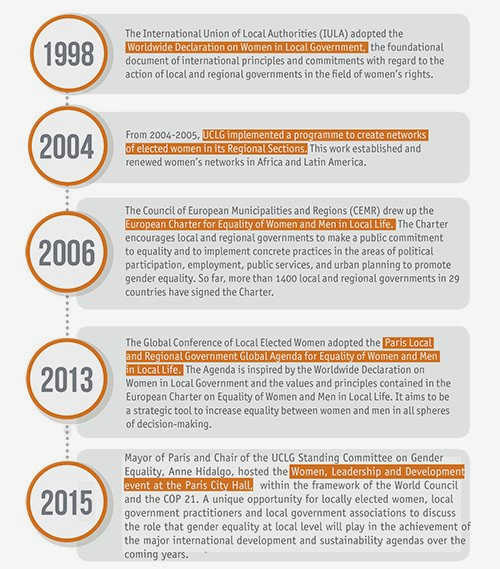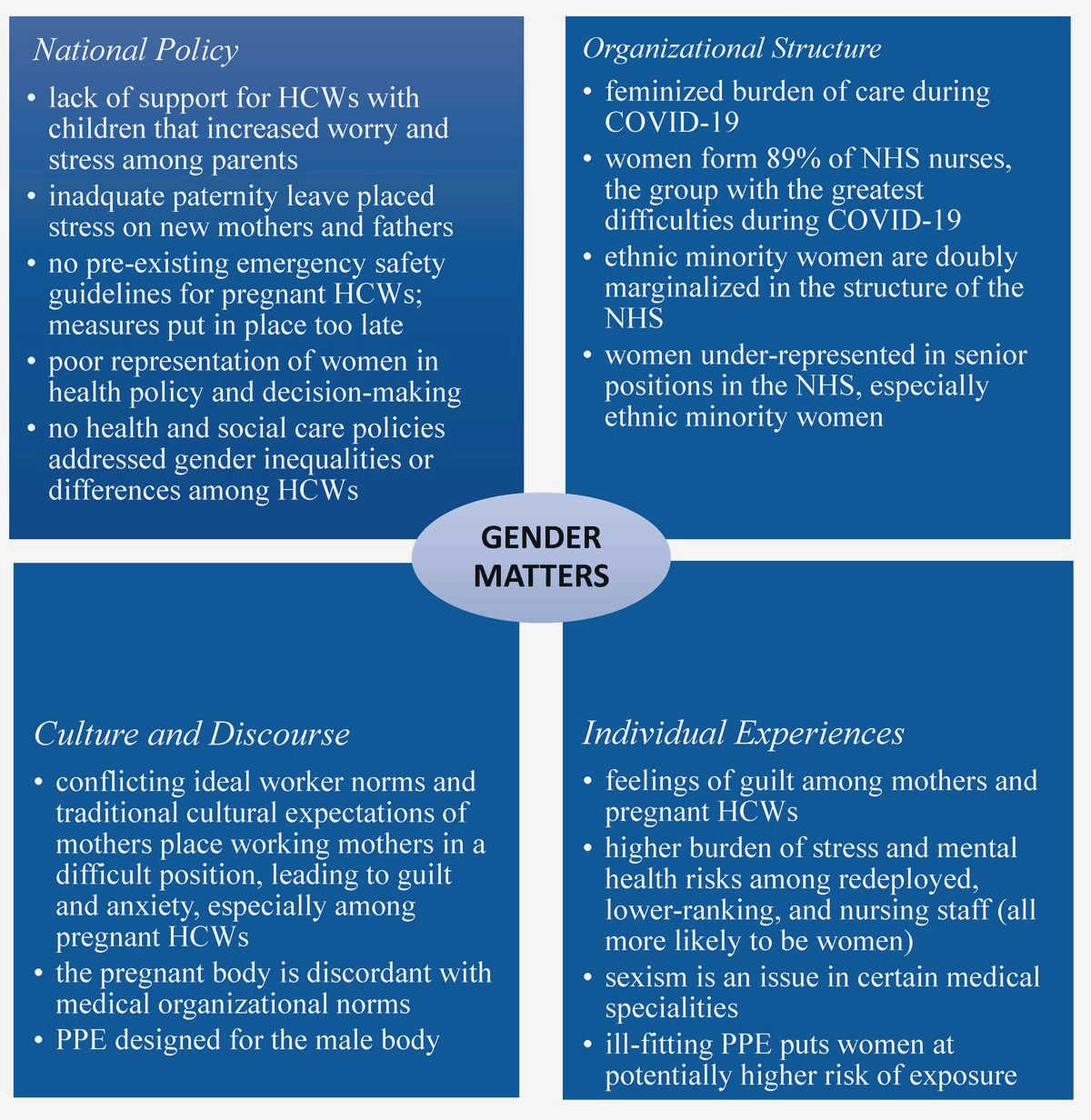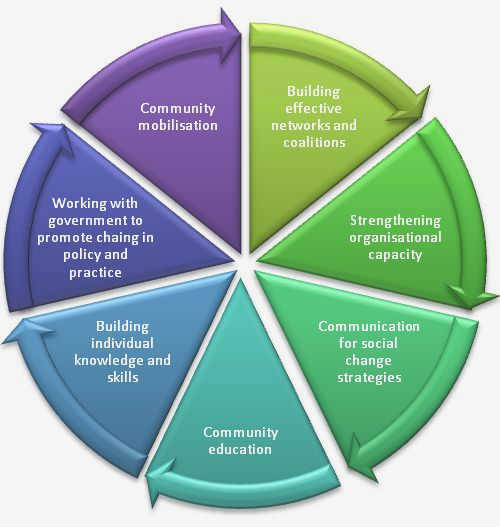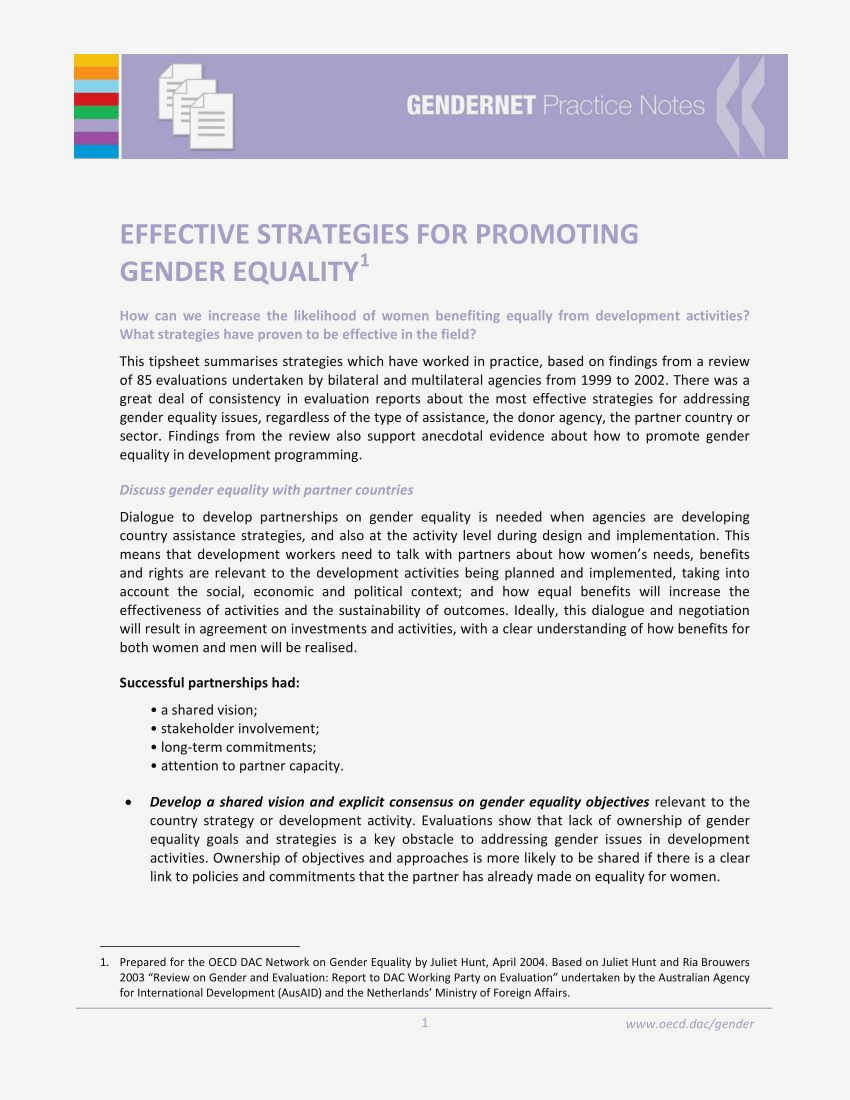Gender inequality is a pervasive issue that affects individuals, communities, and societies worldwide. It is a deeply rooted problem that arises from social, cultural, economic, and political factors. Despite significant progress in the past decades, gender inequality continues to persist, hindering the full realization of human rights and the achievement of sustainable development goals.
Civil society plays a crucial role in addressing gender inequality and advancing gender justice. It encompasses non-governmental organizations, grassroots movements, and community-based initiatives that work towards promoting gender equality and empowering women and girls. Civil society organizations deliver vital advocacy, support services, and policy interventions to challenge discriminatory norms, policies, and practices.
In order to effectively address gender inequality, civil society must employ a range of strategies that are both transformative and sustainable. These strategies include:
1. Advocacy and Policy Reform: Civil society organizations advocate for legal and policy changes that promote gender equality and address gender-based discrimination. They engage with governments, international institutions, and other stakeholders to influence decision-making processes and support the implementation of gender-responsive policies and programs.
2. Empowerment and Capacity-Building: Civil society organizations work to empower women and girls by providing them with the necessary skills, knowledge, and resources to challenge gender norms, access education and economic opportunities, and participate in decision-making processes. This includes providing training, mentorship, and leadership development programs.
3. Awareness raising and Social Mobilization: Civil society organizations play a crucial role in raising awareness about gender inequality and promoting a cultural shift towards gender equality. Through public campaigns, media outreach, and community mobilization, they challenge harmful stereotypes, promote positive role models, and engage men and boys as agents of change.
Overall, civil society’s engagement is essential in addressing gender inequality and promoting gender justice. By employing these strategies, civil society organizations can contribute to creating a more inclusive and equitable society where women and girls can fully exercise their rights and contribute to sustainable development.
Examining the Current State
Addressing gender inequality requires a thorough examination of the current state of affairs. In many societies, women continue to face discrimination and limited opportunities compared to their male counterparts. Despite progress being made over the years, there are still significant challenges that need to be addressed.
Workplace Inequality
A key area of focus when examining gender inequality is the workplace. Women often face unequal pay, limited opportunities for advancement, and a lack of representation in leadership positions. Studies have shown that these disparities exist across various industries and sectors. It is crucial to address these issues through policies that promote equal pay, provide opportunities for career advancement, and improve gender diversity in decision-making roles.

Violence and Discrimination
Gender-based violence and discrimination are major barriers to achieving gender equality. Women and girls around the world continue to face various forms of violence, including domestic violence, sexual harassment, and human trafficking. Discrimination and harmful gender norms perpetuate these acts, making it essential to challenge societal attitudes and implement comprehensive legal frameworks to protect and support victims.
Education and Empowerment
Education plays a vital role in addressing gender inequality. Access to quality education for both girls and boys is crucial in creating a more equitable society. Additionally, empowering women and girls through education and skills training helps to break down barriers and allows them to participate fully in social, economic, and political spheres. Efforts should be made to ensure equal access to education and promote initiatives that empower women and girls.
In conclusion, examining the current state of gender inequality reveals numerous challenges that must be addressed. By focusing on workplace inequality, violence and discrimination, and education and empowerment, civil society can play a vital role in implementing effective strategies for change.
Importance of Addressing Gender Inequality
Gender inequality remains a pressing issue globally, affecting individuals, families, communities, and economies. It is crucial to address and eliminate gender inequality to ensure a fair and just society for all.
One of the main reasons why addressing gender inequality is important is because it is a violation of human rights. Every individual, regardless of their gender, has the right to be treated with dignity, respect, and equality. Gender inequality perpetuates discrimination and hinders the fulfillment of basic human rights for many individuals, particularly women and girls.
In addition to being a human rights issue, gender inequality also has significant social and economic consequences. When women and girls are denied equal access to education, healthcare, employment opportunities, and decision-making positions, it limits their potential and hinders their contributions to society. This not only affects women individually but also has negative consequences for families, communities, and economies as a whole.

Moreover, addressing gender inequality is essential for achieving sustainable development goals. Gender equality is not only a standalone goal but also a crosscutting issue that needs to be integrated into all areas of development. By addressing gender inequality, we can create more inclusive and resilient societies, ensure equal opportunities for all, promote social justice, and achieve sustainable development.
To effectively address gender inequality, it requires collective action and collaboration between governments, civil society, and individuals. It involves challenging societal norms and stereotypes, promoting gender-responsive policies and legislation, empowering women and girls, and creating spaces for dialogue and advocacy. By working together, we can create a more equitable and just society where gender equality is achieved.
Educating and Raising Awareness
Education is a crucial tool in addressing gender inequality and promoting inclusivity. By providing individuals with knowledge and information, we can empower them to challenge discriminatory norms and practices.

1. Schools and educational institutions: One effective strategy is to integrate gender equality into the curriculum at all levels of education. This can involve teaching students about the history of gender inequality, highlighting the contributions of women throughout history, and discussing the importance of gender equality in society. By exposing young minds to these concepts early on, we can foster a sense of empathy and understanding.
2. Training and workshops: Another way to raise awareness is through targeted training programs and workshops. These sessions can provide individuals with the tools and knowledge needed to identify and address gender inequality in their personal and professional lives. For example, workshops on unconscious bias can help individuals recognize their own biases and take steps to overcome them.
3. Media and public campaigns: Utilizing various forms of media, such as television, radio, and social media, can be a powerful tool to educate and raise awareness about gender inequality. Civil society organizations can create public campaigns that challenge gender stereotypes and promote gender equality. These campaigns can reach a wide audience and spark conversations about the need for change.
4. Collaborative partnerships: Building partnerships with other organizations, both within and outside of civil society, can enhance the impact of education and awareness initiatives. By working together, organizations can pool resources and expertise to develop comprehensive educational materials, conduct research, and implement effective programs that address gender inequality from multiple angles.
5. Engaging men and boys: It is essential to involve men and boys in educational and awareness-raising efforts. By educating them about the negative effects of gender inequality and promoting healthy and respectful relationships, we can encourage them to become allies in the fight for gender equality. This can be achieved through workshops, campaigns, and mentorship programs that target men and boys specifically.
Combining these strategies can create a powerful platform for educating and raising awareness about gender inequality. By equipping individuals with knowledge and promoting understanding, we can inspire action and drive real change in society.
Advocacy and Policy Change
Advocacy and policy change are crucial strategies in addressing gender inequality. Civil society plays a vital role in advocating for policy reforms that promote gender equality and challenge discriminatory practices.
Advocacy: Civil society organizations engage in advocacy efforts to raise awareness about gender inequality and promote changes in attitudes and behaviors. They work towards influencing public opinion, mobilizing support, and putting pressure on policymakers to prioritize gender equality issues.
Policy Change: Civil society organizations work towards changing policies and laws that perpetuate gender inequality. They conduct research and gather evidence to demonstrate the impact of discriminatory policies on women and girls. They also propose alternative policy options and advocate for their implementation to ensure gender equality.
Collaboration: Civil society organizations collaborate with other stakeholders, including governments, international organizations, and grassroots movements, to advocate for policy change. By forming strategic alliances and sharing resources, they can amplify their voice and influence decision-making processes.
Monitoring and Evaluation: Civil society organizations monitor the implementation of policies related to gender equality and hold governments accountable for their commitments. They assess the impact of policy changes on women and girls and provide feedback to policymakers to improve their effectiveness.
International Advocacy: Civil society organizations also engage in international advocacy to address gender inequality on a global scale. They participate in international conferences and forums, collaborate with international organizations, and contribute to the development of international frameworks and agreements that promote gender equality.
In conclusion, advocacy and policy change are essential strategies for addressing gender inequality. Civil society organizations play a crucial role in advocating for policy reforms, collaborating with stakeholders, monitoring policy implementation, and engaging in international advocacy efforts to promote gender equality.
Building Partnerships and Coalitions
Addressing gender inequality requires a multi-faceted approach, and building strong partnerships and coalitions is crucial for effective change. By collaborating with other organizations and stakeholders, civil society can amplify their efforts and have a greater impact on advancing gender equality.
Identifying like-minded organizations: To build partnerships and coalitions, civil society should first identify like-minded organizations that share their goals and values. This could include women’s rights organizations, advocacy groups, NGOs, academic institutions, and other relevant stakeholders. By bringing together these organizations, a unified front can be formed to address gender inequality from various angles.
Sharing resources and expertise: Building partnerships and coalitions allows organizations to pool their resources and expertise. This can result in a more efficient use of limited resources and a stronger collective voice. For example, organizations can share research findings, best practices, and training materials, enabling each partner to benefit from the collective knowledge and experience.
Advocacy and lobbying efforts: Partnerships and coalitions provide a platform for joint advocacy and lobbying efforts. By working together, organizations can amplify their messages and have a greater impact on policymakers, governments, and other decision-makers. Collective action can lead to policy changes, legislative reforms, and the implementation of gender-responsive programs and initiatives.
Creating a coordinated approach: Building partnerships and coalitions allows for a coordinated approach to addressing gender inequality. By aligning their efforts, organizations can avoid duplication, identify gaps, and ensure a comprehensive response to the multidimensional aspects of gender inequality. This coordinated approach increases the effectiveness and efficiency of interventions and promotes sustainable change.
Engaging diverse stakeholders: Partnerships and coalitions enable organizations to engage diverse stakeholders in the fight against gender inequality. This can include individuals, communities, businesses, media, and government entities. By involving a wide range of actors, civil society can mobilize support, increase public awareness, and foster a culture of gender equality and social justice.
Building partnerships and coalitions is a critical strategy for civil society in addressing gender inequality. Through collaboration, resource sharing, advocacy, coordination, and stakeholder engagement, organizations can work together to create lasting change and promote gender equality in all aspects of society.
Economic Empowerment and Job Opportunities
Addressing gender inequality requires a focus on economic empowerment and job opportunities for women. Women should have equal access to education and training programs to develop the skills necessary for a competitive job market. Furthermore, they should have equal access to job opportunities and promotions based on merit and qualifications, rather than bias or discrimination.
Efforts should be made to eliminate gender pay gaps and ensure that women receive equal pay for equal work. Women should also have access to affordable childcare and parental leave policies that support their ability to participate in the workforce without compromising their caregiving responsibilities.
Entrepreneurship and Business Development
Encouraging women’s entrepreneurship and supporting their business development is another effective strategy for promoting economic empowerment. Women should have access to financial resources, such as loans and grants, to start and expand their businesses. They should also have access to mentorship and training programs to enhance their business skills and knowledge. Additionally, creating a supportive business environment with policies that promote women’s participation in entrepreneurship can contribute to their economic empowerment.
Creating Inclusive Workplaces
Creating inclusive workplaces that prioritize diversity and inclusion is crucial for addressing gender inequality. Employers should adopt policies and practices that promote a gender-balanced workforce and ensure equal employment opportunities for all. This includes implementing policies against gender-based discrimination, harassment, and bias in the workplace. In addition, companies should provide opportunities for career advancement and leadership positions for women.
By focusing on economic empowerment and job opportunities, society can take significant strides towards addressing gender inequality. We must work towards creating a world where women have equal access to education, job opportunities, and business resources, allowing them to thrive and contribute to the economy on equal footing with men.
Eliminating Gender Stereotypes
Education and Awareness: One effective strategy for eliminating gender stereotypes is through education and awareness. Schools and educational institutions can play a crucial role in promoting gender equality by integrating gender issues into their curriculum. By teaching students about the harmful effects of stereotypes and the importance of treating everyone equally, we can help challenge and break down gender stereotypes.
Media Representation: The media has a powerful influence on shaping perceptions and reinforcing stereotypes. To combat gender stereotypes, it is crucial for the media to portray diverse and realistic representations of men and women. This can be done by promoting and supporting content that challenges traditional gender roles and showcases individuals breaking stereotypes.
Empowering Women: Empowering women is another essential strategy in eliminating gender stereotypes. By providing women with equal opportunities and access to education, employment, and leadership positions, we can challenge the notion that certain roles and positions are reserved for men. Supporting women’s rights and creating an inclusive society where women can thrive will help break down gender stereotypes and promote equality.
Engaging Men and Boys: In order to achieve complete gender equality, it is necessary to engage men and boys in the process. By challenging harmful stereotypes and expectations placed on men and promoting healthy and respectful relationships, we can break down gender barriers and promote equality for all genders. Education, awareness, and promoting positive role models can be effective strategies in engaging men and boys in the fight against gender stereotypes.
Legislation and Policies: Strong legislation and policies that promote gender equality and prohibit discrimination can also help eliminate gender stereotypes. Governments and organizations should implement and enforce laws that protect individuals from gender-based discrimination and provide equal opportunities for all genders. By creating a legal framework that values and promotes gender equality, we can work towards eliminating gender stereotypes and achieving a more inclusive society.
Collaboration and Partnership: Collaboration and partnership between civil society organizations, government agencies, educational institutions, and the private sector are crucial in addressing and eliminating gender stereotypes. By working together, sharing resources, and implementing joint initiatives, we can create a united front against gender stereotypes and promote lasting change. Collaboration can also help amplify the voices of marginalized communities and ensure that the fight against gender stereotypes is inclusive and intersectional.
Supporting Women’s Leadership
Supporting women’s leadership is an essential component in addressing gender inequality and achieving greater gender balance in civil society. By providing opportunities for women to assume leadership positions, we can break down barriers and challenge traditional gender norms that limit women’s participation in decision-making processes.
One effective strategy for supporting women’s leadership is by implementing mentoring programs. By pairing aspiring female leaders with experienced mentors, we can provide them with guidance, support, and valuable insights into the challenges and opportunities they may face in their leadership journey. Mentoring programs also create a supportive network of women leaders who can learn from each other’s experiences and inspire one another.
Another strategy is establishing quotas and affirmative action policies within civil society organizations. Quotas can help ensure that a certain percentage of leadership positions are filled by women, creating a more diverse and inclusive decision-making body. This not only provides more opportunities for women to rise into leadership roles but also serves as a signal to society that gender equality is a priority.
Furthermore, investing in women’s leadership education and training programs can equip women with the necessary skills and knowledge to excel in leadership roles. These programs can focus on enhancing communication skills, conflict resolution, strategic thinking, and decision-making abilities. By empowering women with the right tools, we can foster their confidence and competence in taking on leadership positions.
Lastly, it is crucial to challenge gender stereotypes and unconscious biases that perpetuate gender inequality. This can be done through awareness campaigns, workshops, and trainings that promote a more inclusive understanding of leadership and challenge traditional gender roles. By reshaping societal perceptions, we can create a more supportive and inclusive environment for women leaders.
Addressing Violence Against Women
1. Creating Awareness and Education
One effective strategy for addressing violence against women is to create awareness and educate the public about the issue. This can be done through various means, such as campaigns, workshops, and educational programs in schools and communities. By raising awareness about the prevalence of violence against women and its consequences, it becomes possible to challenge societal norms and attitudes that perpetuate this violence.
2. Strengthening Legal Protections
Another important step in addressing violence against women is to strengthen legal protections. This includes enacting laws that criminalize all forms of violence against women, providing survivors with access to justice, and ensuring that perpetrators are held accountable for their actions. It is crucial to have laws and policies in place that prioritize the safety and well-being of women and provide them with the necessary support and protection.
3. Supporting Survivors
Supporting survivors of violence is vital in addressing the issue. This can involve providing shelters and safe spaces for survivors to seek refuge, offering counseling and psychological support, and connecting them with essential services, such as healthcare and legal assistance. It is important to create a supportive environment that empowers survivors and helps them rebuild their lives.
4. Engaging Men and Boys
Engaging men and boys in conversations about gender equality and violence against women is crucial for promoting change. This can be done through educational programs that challenge harmful masculinity norms, encourage respectful relationships, and teach about consent. By involving men and boys as allies and advocates, it becomes possible to create a culture of equality and respect that rejects violence against women.
5. International Cooperation and Collaboration
Addressing violence against women requires international cooperation and collaboration. This involves sharing best practices, exchanging information, and coordinating efforts to combat violence globally. International organizations and civil society groups can work together to advocate for policy changes, raise awareness, and support initiatives that aim to end violence against women.
6. Changing Media Representations
The media plays a powerful role in shaping societal attitudes and perceptions. Addressing violence against women also requires challenging and changing media representations that perpetuate gender stereotypes and normalize violence. This can be done by promoting balanced and fair portrayals of women, providing training to journalists about responsible reporting, and encouraging media organizations to adopt ethical guidelines that condemn violence against women.
Monitoring and Evaluation
Monitoring and evaluation play a crucial role in ensuring the effectiveness and impact of strategies aimed at addressing gender inequality. By systematically collecting and analyzing data, civil society organizations can assess their progress, identify gaps, and make informed decisions about their interventions.

Monitoring
Monitoring involves the regular collection and analysis of data on the implementation of strategies and programs. This includes tracking the activities, outputs, and outcomes of initiatives aimed at addressing gender inequality. Monitoring allows civil society organizations to identify any challenges or obstacles that may arise during implementation and take corrective actions in a timely manner.
During the monitoring process, it is important to establish clear indicators and targets to measure the progress towards gender equality. Indicators can be quantitative or qualitative and should be relevant, feasible, and measurable. These indicators can be used to assess changes in attitudes, behaviors, and social norms, as well as improvements in access to resources and opportunities for women and girls.
Evaluation
Evaluation involves the systematic and objective assessment of the effectiveness, efficiency, and impact of strategies and programs. It provides a deeper understanding of the outcomes and impacts of interventions and helps determine whether the desired change is occurring.
Evaluation can be conducted at different stages of intervention, such as mid-term or final evaluations. It involves the use of various evaluation methods, including surveys, interviews, focus groups, and case studies, to collect data and generate evidence about the effectiveness of strategies. The findings from evaluations can inform decision-making, improve program design, and guide the allocation of resources.
Furthermore, evaluation should not only focus on the direct impacts of interventions but also consider unintended consequences and potential negative effects. This is particularly important in addressing gender inequality, as interventions may interact with complex social, cultural, and economic factors.
In conclusion, monitoring and evaluation are essential tools for civil society organizations in addressing gender inequality. They enable organizations to track their progress, identify areas for improvement, and learn from their experiences. By collecting and analyzing data, organizations can ensure the effectiveness and impact of their interventions and contribute to meaningful and sustainable changes towards gender equality.





